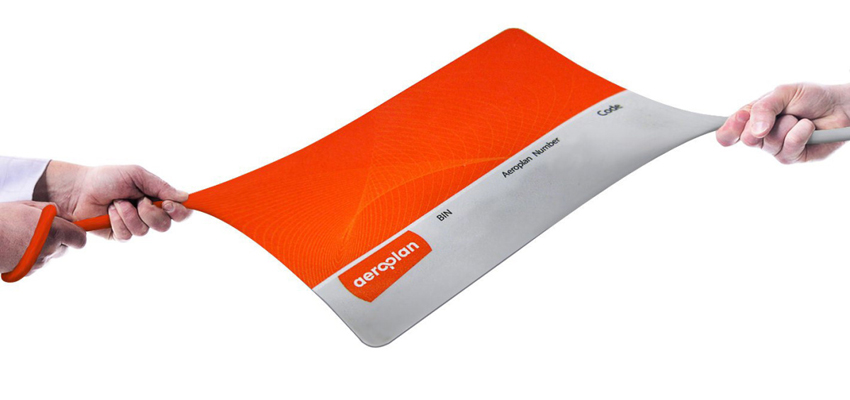This is an article in a multi part series on the different ways to earn Aeroplan miles
- Overview
- Part 1 – Credit Card Spend
- Part 2 – Flying on Star Alliance Carriers
- Part 3 – Credit Card Sign-Up Bonuses
- Part 4 – Partner Offers
The Skinny
- Aeroplan miles can be earned from flying on Air Canada and other flight (Star Alliance) partners
- Most flights that can earn you Aeroplan miles will allow you to earn miles from a different partner instead of Aeroplan miles
- United Airlines is the North American partner, whose miles can be earned flying on the same flights that would earn Aeroplan miles
- United miles can be compared to Aeroplan miles as a natural choice to earn miles (if you don’t want Aeroplan miles)
- Earning miles
- usually earn the same number of miles (can take 100 United miles or 100 Aeroplan miles)
- sometimes you would earn more United miles for a given flight (200 United miles or 100 Aeroplan miles)
- I don’t know of any situations where you would earn more Aeroplan miles than United miles
- Redeeming Miles
- Redeem United miles for similar flights as Aeroplan
- Each program has their own rules
- Lower taxes / fees for redemption on United
- No last-minute booking fees on Aeroplan
- (see table below)
- Toronto – Calgary example flight
- United miles would be better for this situation due to the lower taxes and fees
Overview
Another way that we’ll look at earning Aeroplan miles in this series, is earning miles from flights. When you fly on Star Alliance Carriers, you earn Aeroplan miles.
You also have the option of crediting your earned miles to other partner programs, such as United or Avianca. Your status with the airline that you’re flying with is also going to play a role in how much benefit you see, although status is not the most important factor.
The first tier of benefits usually kicks in at 25,000, which should qualify you for Star Alliance Silver. The benefits don’t tend to get good until you get over 35000, however.
Partner Program Options
As I said, you have the option of converting your miles to other partner programs. Essentially, when deciding which program is best, you need to look at the two phases of airlines miles. I call these, “earning and burning”.
For our comparison, we’re going to use the United program, because United is the Star Alliance carrier that is based out of the U.S.. Personally, I choose to accrue miles without United rather than Aeroplan. It’s important though that you look at the benefits of both, and make your decision for yourself.
Earning: Aeroplan vs United
Remember, that most people in North America fly economy. Because of that, I like to use economy flights as the standard measurement when looking at these types of programs
Let’s take a look at a real-life example of mile earned:
ANA Flight in L Economy Tokyo (NRT) to Hong Kong (HKG):
| Accrual Rate | Miles Earned | ||||||
|---|---|---|---|---|---|---|---|
| Route | Carrier | Class | Miles Flown | Aeroplan | United | Aeroplan | United |
| NRT-HKG | ANA | Economy L | 1842 | 50% | 100% | 921 | 1842 |
When you look at the data above, it becomes clear that you would earn more miles in the United program than through Aeroplan. Although I haven’t done an exhaustive search through all possible airlines, I have looked at multiple cases and compared the rewards. Through my research, I haven’t been able to find a flight where you would get more Aeroplan miles than United. They could exist, but I haven’t been able to find them yet.
Burning – Redeeming Miles
Aeroplan miles and United miles can have access to the same pool of reward flights. It is important to take all factors into account when seeing where you get the best value for point redemption however. You have to consider things like whether or not the program meets your booking recommendation.
For instance, if you book last minute a lot, United charges an additional fee. On the other hand, if you need to fly with other airlines, Aeroplan works out a little cheaper than United. These are all factors worth considering, and I’ve included a few others in the chart below.
| Aeroplan | United | |
|---|---|---|
| Last Minute | No Last Minute Fee | $75 Additional Fee within 21 days of departure |
| Fuel Surcharges | Hefty fuel surcharges added to flights operated by about 1/2 of the Star Alliance carriers | Fuel Surcharges are never added to any United redemption |
| Taxes | More taxes charged | Less taxes charged |
| One Ways Allowed | Only when North America is the destination or origin (or wholly domestic) | Every flight is priced as a one-way |
| Stopovers | Always allowed [1 stopover] on any roundtrip International itineraries are allowed [2 stopovers] or [1 openjaw and 1 stopover] |
1 stopover and double open-jaw allowed on international itineraries |
| Short Haul | 15K roundtrip based on region-arguably uselessSee my analysis at… | 10K one way for flights less than 650 miles each way |
| Award Chart | Slightly more expensive for economySlightly cheaper for partner flights | Slightly cheaper for economySlightly more expensive for business using non-United flights |
If you’re an economy flyer, then you’ll get more value out of United miles than you would out of the equivalent in the Aeroplan program. However, if you’re a business class traveler, be aware that this is more expensive under the United program.
Here’s another real-world example, looking at the taxes and fees assessed by Aeroplan, versus those assessed by United.
Example comparing Taxes and Fees
| Flight | ||
|---|---|---|
| AC759 YYZ-SFO & AC754 SFO-YYZ | ||
| April 15, 2014 – April 22, 2014 | ||
| Aeroplan | United | |
| Number of Miles (economy roundtrip) | 25K | 25K |
| U.S. APHIS User Fee | $5.60 | $5.60 |
| U.S. Immigration User Fee | $7.90 | $ 7.90 |
| U.S. Customs User Fee | $6.20 | $6.20 |
| Canada Airport Improvement Fee | $25.00 | $25.00 |
| Canada Harmonized Sales Tax | $3.25 | $3.25 |
| Canada Goods and Services Tax | $4.06 | $0.60 |
| Canadian Security Charge | $12.10 | $12.10 |
| September 11th Security Fee | $6.30 | $6.30 |
| Fuel Surcharge | $54.00 | |
| Nav Canada – Air Navigation Services | $15.00 | |
| U.S. International Transportation Tax | $39.40 | |
| U.S Passenger Facility Charge | $5.10 | |
| Total Cost | 25K Aeroplan Miles + $184 | 25K United Miles + $67 |
If this is the flight that you want to take, you’ll see that your United miles are actually much more valuable. However, remember that every situation is different. If you needed 2 stopovers on a flight to Europe, you’d actually get better value from the Aeroplan.
Toronto to Calgary
If we come back around to that Calgary to Toronto round trip flight, you’ll remember that 25,000 United miles covered 89% of the total cost of the flight, but Aeroplan only hit the 69% mark. This is a good benchmark for the standard traveler, as this is a fairly common and typical flight. In this case again, United comes out on top. However, as the 2-stopover trip to Europe above indicates, you always have to consider your particular flight plans to know where the absolute best value is hidden.
In Conclusion
I hope you’ve enjoyed this four part series on Aeroplan miles. There are some great bonuses to be had out there, but it is important to not get taken in by the flashy promotions and advertisements for any reward program.
Instead, you need to sit down and do some analysis of both your spending and the rewards you want to gain. If you do that, you can maximize your earnings by a significant margin. I hope this guide will help you do exactly that!











Thank you for breaking it down. Was thinking of changing from Mileage plus to Aeroplan since I am based in Canada. After reviewing the information, your provided I will stay with Mileage Plus thank you very much.
Every program has their pluses and minuses. Thanks.